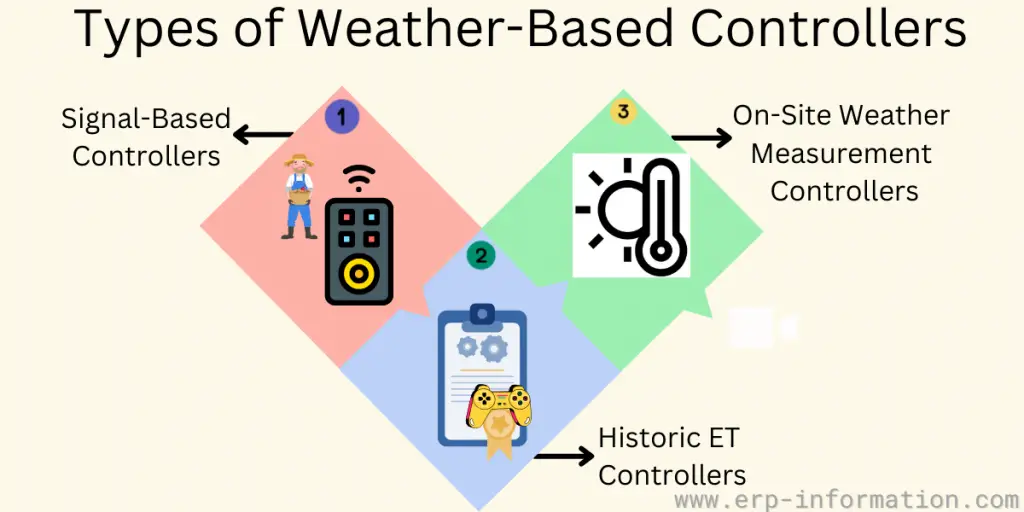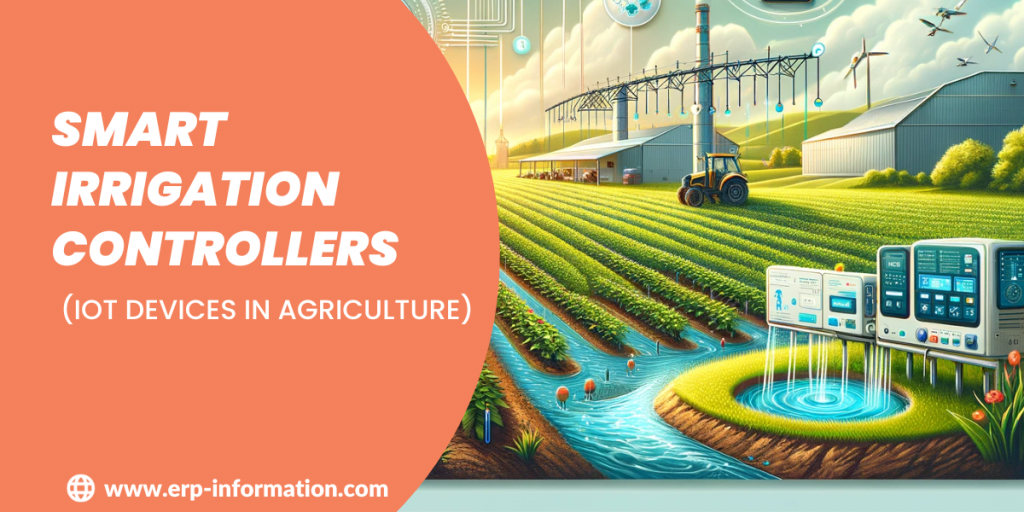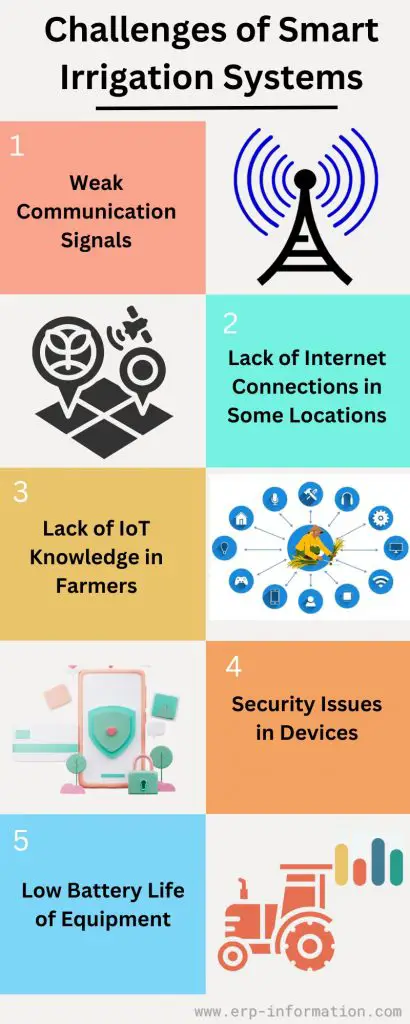Smart irrigation controllers are ingenious IoT devices used in agriculture and gardening. It helps formers to know precisely when to water each plant, conserving resources while maximizing yield.
This post will delve into the world of these cutting-edge devices, discover how they revolutionize farming, empower sustainability, and cultivate a greener future.
What are smart irrigation controllers?
Smart irrigation controllers are advanced devices and part of smart irrigation systems that automate and optimize watering schedules for gardens, lawns, or farms.
There are 2 types of irrigation controllers.
Types of irrigation controllers
- Weather-based smart irrigation system
- Soil moisture sensor-based smart irrigation controllers
1. Weather-based smart irrigation controllers
Weather-based smart irrigation controllers work by integrating real-time weather data and using that information to adjust and optimize watering schedules for landscapes.
These controllers employ a combination of sensors, weather forecasts, and algorithms to ensure efficient and appropriate irrigation.
They access local weather data from various sources, such as weather stations, satellites, or online weather services.
This data includes critical information like temperature, humidity, wind speed, solar radiation, and most importantly, precipitation forecasts.
Then the irrigation controllers calculate the rate of evapotranspiration (ET), which is the combined loss of water from the soil through evaporation and from plants through transpiration. ET is a MAJOR factor in determining how much water the landscape needs.
Using the collected weather data and ET calculations, the smart controller generates customized irrigation schedules for specific zones or plant types within the landscape.
For example, on a hot, windy day, the ET rate is higher, indicating that more water is being lost from the soil and plants, requiring increased irrigation.
Three types of weather-based controllers are signal-based controllers, Historic ET controllers, and On-site weather measurement controllers.

Signal-based controllers
These controllers use signals or meteorological data from a public source and calculate ET for the grass surface at the site. Then this information is passed through a wireless connection to the controller.
Examples: Soil moisture sensor, rain sensor, flow sensor, etc.
Historic ET controllers
Historic ET controllers, also known as reference ET controllers, rely on historical evapotranspiration (ET) data to determine irrigation schedules.
They use past weather patterns and historic water use to estimate water requirements.
On-Site weather measurement controllers
They gather specific weather data directly from the landscape they are watering to calculate ET.
2. Soil moisture sensor-based irrigation controllers
They measure moisture content in soil. 2 types of soil moisture sensor-based systems are Suspended cycle irrigation systems and Water on demand irrigation
Suspended cycle irrigation systems resemble conventional timer controllers in terms of their setup with predefined watering schedules, start times, and duration.
However, the distinctive feature of these systems is their ability to halt the next scheduled irrigation event when the soil moisture reaches a sufficient level.
Water-on-demand irrigation eliminates the need for manually setting irrigation durations, focusing instead on specifying start times and days of the week for watering.
Users can establish lower and upper threshold values, and the system automatically triggers irrigation when the soil moisture falls below the lower threshold and stops once it reaches the upper threshold.
Challenges of smart irrigation systems
Weak communication signals
Remote agricultural areas or locations with challenging terrain might encounter weak or inconsistent communication signals. This can disrupt the flow of real-time data between sensors, controllers, and central systems, impacting the system’s effectiveness.
Lack of internet connections in some locations
Smart irrigation systems heavily rely on internet connectivity for data transmission and remote control. However, some rural or remote areas might lack reliable internet access, hindering the system’s functionality.
Lack of IoT knowledge in farmers
Farmers may face a learning curve in adopting and understanding IoT-driven technology. The complexity of these systems might pose a challenge, requiring training and education initiatives to ensure proper utilization and maintenance of smart irrigation controllers.
Security issues in devices
IoT devices are susceptible to cyber threats, including hacking and data breaches. Inadequate security measures within these devices can compromise the entire irrigation system, leading to data loss or system malfunction.
Low battery life of equipment
Many IoT devices in smart irrigation systems operate on batteries, and short battery life can pose operational challenges. Frequent battery replacements or recharging can disrupt the system’s continuity.
Case study
We are providing case studies of Innovating Irrigation Efficiency in Ipswich City and Maejo University.
1. Ipswich City Council, Australia
Challenge
The Ipswich City Council in Australia faced water conservation challenges in their landscaping and agricultural practices. They sought an efficient irrigation system that not only conserved water but also reduced operational costs.
Solution and Implementation
The council implemented an automated soil-moisture monitoring system, replacing traditional methods with a web-based automated approach. This system utilized real-time soil moisture data to drive irrigation decisions, outperforming rainfall-based allocation methods. The automated system not only conserved water but also reduced labor needs and minimized the requirement for in-depth soil knowledge.
Results
Water conservation: The adoption of the automated system significantly reduced water usage and wastage, conserving this precious resource while delivering improved overall results.
Cost savings: By eliminating inefficient water use and optimizing irrigation, the council achieved substantial cost savings, making the system economically advantageous.
Maejo University, Thailand
Challenge
Maejo University in Thailand aimed to develop a sustainable smart farm, particularly focusing on optimizing irrigation and energy usage in their mushroom cultivation.
Solution and Implementation
The university established a smart farm powered by solar energy, leveraging IoT technology to automate and control irrigation alongside environmental factors critical for mushroom growth—light, temperature, humidity, and airflow. This IoT-driven system efficiently managed irrigation, utilizing stored soil moisture during daylight hours and adjusting irrigation duration as necessary.
Results
Energy efficiency: By harnessing solar energy and implementing IoT controls, the smart farm significantly reduced energy consumption, achieving savings between 20% and 29%.
Water and energy cost reduction: The use of solar energy to power irrigation systems not only reduced energy costs but also diminished reliance on traditional energy sources.
Conclusion
Smart irrigation controllers optimize watering and help to save water up to 20% more compared to traditional irrigation methods as per the International Center for Water Technology at California State University in Fresno study.

